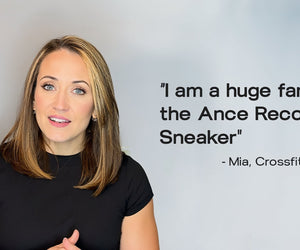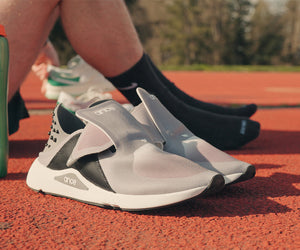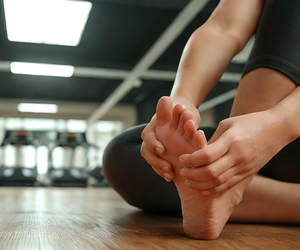After a killer workout, a long shift, or just a day on your feet, your body might be done, but your feet? They are screaming. That’s when you need recovery shoes. Designed to take pressure off and give your feet the rest they actually deserve, these shoes are not just a trend, they are a lifesaver.
In this blog, we break down what recovery shoes are, how they work, and how to tell if they are the missing piece in your recovery routine.
What Are Recovery Shoes
Let’s be clear: recovery shoes aren’t just your favorite slides with a little extra cushion.
These are specifically engineered to help your feet reset and repair. They are often worn by athletes, fitness pros, and anyone who’s putting in long hours on their feet: nurses, hospitality workers, parents on-the-go.
Recovery shoes not only cushion sore heels, cradle tired arches, and provide essential support when you’re off your feet, but also help realign your feet, improve blood flow for faster rejuvenation, stabilize your steps, and reduce pressure from activated areas.
What Do Recovery Shoes Actually Do?
A good recovery shoe doesn’t just feel good, it works smart. Here’s how:
-
Reduces pressure: Especially around high-impact zones like the heels and arches.
-
Supports alignment: Helps your posture by keeping your feet in a natural, neutral position.
-
Improves circulation: Better blood flow, supports faster muscle recovery, and less soreness.
They are your feet’s version of a foam roller, relieving tension and fatigue, promoting movement, and setting you up for the next round.
Recovery Shoes vs. Regular Shoes: What’s the Difference?
| Feature | Regular Sneakers | Recovery Shoes |
|---|---|---|
| Toe Box | Can be narrow, restrictive | Wide, let toes spread naturally and reduce pressure from the plantar fascia. |
| Support | Often generic or sport-specific | Adaptive arch support, sometimes 360° wrap |
| Cushioning | Built for performance and impact | Meant for recovery. Soft, but stable |
| Use Case | Running, walking, casual wear | Cooling down, resting, post-workout recovery |
| Feel | Active, responsive | Relaxed, pressure-relieving, restorative |
Key Features That Make a Good Recovery Shoe
Not all recovery shoes are built the same. Look for these features:
-
Wide toe box: Your toes should never feel cramped.
-
Soft but supportive sole: EVA foam works well for shock absorption and rebound.
-
Arch support that adapts: A 360° wrap can hug your foot in all the right places.
-
Acupressure footbed: Gently stimulates pressure points to release foot tension and increase bloodflow.
-
Breathable materials: Especially important if you’re wearing them around the house or post-workout.
-
Machine washable: Because sweat happens, and recovery shouldn’t be high-maintenance.
Who Are Recovery Shoes Really For?
You don’t need to log 10 miles a day to benefit from them. Recovery shoes are a game changer if you:
-
Work on your feet all day,
-
Struggle with foot or heel pain,
-
Have plantar fasciitis, arch fatigue, or stiffness,
-
Train regularly and want better recovery between sessions,
-
Just want more support than going barefoot at home.
When Should You Wear Them?
There is no wrong time to let your feet recover, but recovery shoes are especially helpful:
-
After a workout: Give your feet a break post-run, gym session, or WOD.
-
Post-shift: Especially if you work in healthcare, retail, or food service.
-
At home: Ditch the barefoot strain. Support matters, even on your own floors.
-
While traveling or running errands: Light on your feet doesn’t have to mean unsupported.
Basically, anytime your feet say, “We’re done,” these shoes step in.
Can You Wear Recovery Shoes All Day?
In most cases, absolutely.
If your recovery shoes offer proper arch support, a solid sole, and a secure fit, they can be your all-day go-to. Just make sure you’re not sacrificing structure for softness. A good pair should feel like a reset, not a risk.
Are Recovery Shoes Worth It? Or Just a Trend?
Let’s be honest, some trends are all hype. This one isn’t.
From athletes to podiatrists, recovery shoes are gaining real traction for a reason. They support tired feet, improve posture, and actually speed up the recovery process. More brands are investing in this space, innovating on footbed technology, sustainable materials, and better biomechanical design.
If foot fatigue or soreness is even occasionally part of your day, trying a pair might be one of the easiest wins in your wellness routine.
Recovery starts from the ground up. Step into Ance recovery shoes that support your rhythm, every move, every day.
FAQs
Q: What do recovery shoes do?
They support tired feet, reduce soreness and fatigue, and help your muscles recover after stress or impact.
Q: Do recovery shoes actually work?
Yes. A well-designed pair can significantly reduce arch fatigue, heel pain, and overall discomfort.
Q: Who should wear recovery shoes?
Anyone from athletes to service workers, dealing with foot pain, fatigue, or long days of standing.
Q: Can recovery shoes be worn all day?
Definitely. If they’re supportive and well-cushioned. Look for arch support and heel stability for all-day wear.










